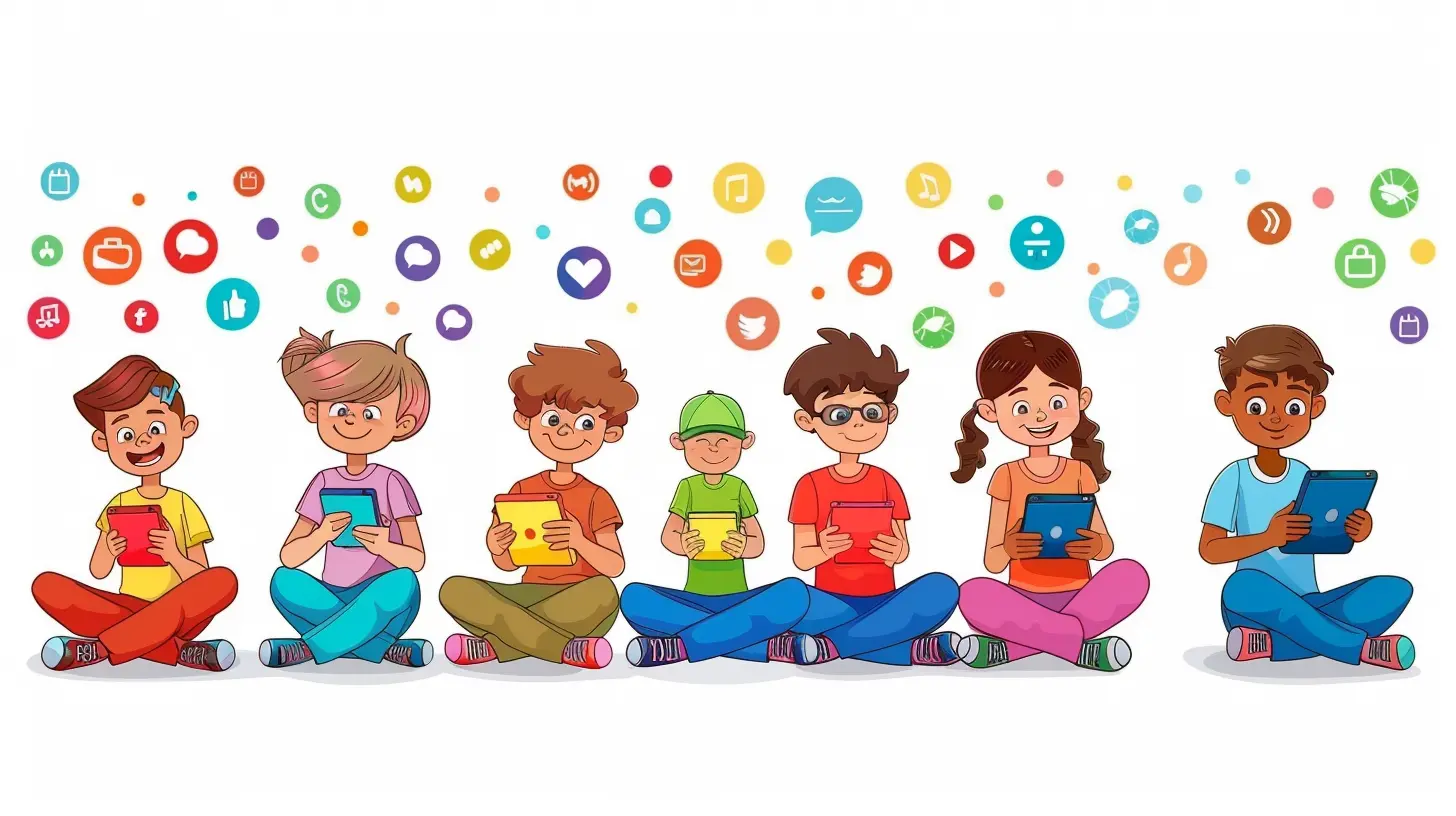How to Spot the Warning Signs of Online Addiction in Children
25 October 2025
Let’s be honest — handing over a tablet or smartphone to our kids can feel like magic. Peace and quiet? Yes, please. But for many parents, that peace can quickly turn into panic when screen time starts feeling less like a tool and more like a trap. With the digital world expanding by the minute, it’s more important than ever to know how to spot the warning signs of online addiction in children.

What Is Online Addiction, Really?
Online addiction isn’t just about spending a lot of time online. It's when screen time starts overshadowing everything else — school, friends, sleep, and even meals. Imagine your child treating their phone like a lifeline — that’s when alarm bells should start ringing.Think of it the same way you would with sugar. A little bit? Totally fine. But a diet made up entirely of candy? Not so much. The internet, while full of amazing learning resources and fun, can also become an unhealthy obsession if left unchecked.

Why Kids Are More Vulnerable Than Adults
Let’s get one thing straight: kids' brains are still under construction. Their self-control button gets jammed easily, especially when faced with the endless scroll of TikTok videos or the thrill of online gaming.Children crave connection, rewards, and fun — the internet offers all of this in a non-stop stream that's irresistible. Their emotional regulation, impulse control, and coping skills are still developing, which makes them prime targets for digital burnout and dependency.

So, What Are the Red Flags? Let’s Break It Down.
You don’t need to be a psychologist or tech expert to recognize when things start going sideways. Here are some common, real-world signs your child might be slipping into online addiction territory:1. Withdrawal from the Real World
Is your child suddenly uninterested in activities they used to love — sports, playing outside, drawing, reading? That’s a red flag. If hanging out with friends or family feels like a chore compared to screen time, it’s time to pause and reflect.2. You Notice Secretive Behavior
They quickly shut the device when you walk into the room. They hide browser history or get defensive when asked about their screen time habits. This kind of sneaky behavior often means they’re aware something’s off.3. Mood Swings and Irritability
Ever tried to take a tablet away and it felt like you launched World War III? Extreme anger, anxiety, or frustration when they can’t access devices can be a major sign of dependency. It’s like pulling a toy away from a toddler — except the toy is connected to their self-worth and happiness.4. Neglecting Responsibilities
Homework slipping through the cracks? Chores undone? Falling grades? Every child has an off day, but if this becomes the norm, screen time could be part of the problem. Online addiction often leads to a shift in priorities — and not in a good way.5. Changes in Sleep Patterns
Late-night gaming or scrolling? Difficulty waking up in the morning? The glow of the screen messes with melatonin, the sleep hormone. And kids aren’t exactly built to regulate themselves — which is where your observation is crucial.6. Physical Complaints
Headaches, eye strain, sore thumbs or wrists, and even back pain. Sounds like complaints from someone in their 40s, right? But kids who spend hours hunched over screens can start feeling these physical side effects too.7. Loss of Time Awareness
If your child says they'll play for “just 10 more minutes” and suddenly it’s two hours later, that’s not just poor time management — that could be a sign of gaming or social media addiction.8. Using the Internet to Escape Real-Life Problems
Does your child turn to their device when they're upset, stressed, or anxious? This is a major warning sign. When screens become an emotional crutch, it’s harder for them to develop real coping strategies.
Why This Matters More Than You Think
Online addiction isn't just about wasted hours. It can lead to poor academic performance, disrupted sleep, isolation, anxiety, depression — even cyberbullying. And let’s not forget those sketchy online spaces filled with people who don’t always have innocent intentions.The longer it goes unnoticed, the harder it becomes to break the habit. Think of it like a snowball — the longer it rolls, the bigger and messier it gets.
Get Ahead of It: Preventative Steps That Work
The good news? You don’t have to unplug your child completely or become a tech tyrant. Prevention is all about balance, boundaries, and being present.1. Establish Screen Time Boundaries
This isn’t about being the villain — it’s about teaching digital self-care. Set daily limits for screen use. Use tools like parental controls and screen monitoring apps.But here’s the secret: consistency is key. If Monday’s screen time rule flies out the window by Friday, kids learn that rules are flexible.
2. Encourage Offline Hobbies
Introduce them to music, sports, board games, puzzles — anything that doesn’t involve a screen. Create “unplugged zones” in your home where devices are off limits (like the dinner table or bedrooms).You might even want to lead by example. Yep, that means putting your phone down too. Kids imitate what they see, not what they’re told.
3. Talk About Screen Use Openly
Ask them what they love online. Is it gaming with friends? Watching YouTubers? Scrolling memes? Understanding what draws them in helps you connect instead of clash.Create a safe space for them to talk about their screen habits—without judgment. Let them know you’re not out to punish, but to protect.
4. Be Involved in Their Online World
Follow their favorite content creators, sit beside them during games, ask questions. Show interest the way you would if they had just scored a goal in soccer.Being involved makes it easier for you to spot when something’s off. Plus, it shows them you care.
5. Develop a Family Media Plan
Sit down as a family and design a media routine. Think of it like a family budget, but for internet time. Outline when, where, and how devices should be used.Include screen-free zones (like during meals or bedtime), agreed-upon limits, and even “digital detox” days.
What To Do If You Suspect Online Addiction
If warning bells are ringing in your head after reading this, don’t panic — but don’t ignore it either.1. Start the Conversation
This sounds easy but can be the hardest step. Talk honestly, not accusatorily. Avoid blaming. Instead, express concern: “I’ve noticed you seem distracted and upset when your screen is taken away. Can we talk about what’s going on?”2. Track Behaviors
Keep a journal of screen time habits, emotional patterns, and physical symptoms. Having this data can be super helpful if you need to involve a counselor or therapist later.3. Seek Professional Help If Needed
If your child is showing extreme signs and nothing seems to work, don’t hesitate to consult a pediatrician or child psychologist. There’s no shame in asking for help — it's a sign of strength and love.There are also digital detox camps, therapy programs, and support groups that specialize in online addiction. These resources offer structured plans tailored to your child’s needs.
It’s Not About a Perfect Parent — It’s About a Present One
Look, no one gets it right all the time. The internet isn’t going anywhere, and shielding our kids from it entirely is not realistic — and frankly, not even necessary.But being proactive, staying in tune with your child, setting healthy boundaries, and leading with love and curiosity? That’s parenting gold right there.
Remember, your job isn’t to fight the tech — it’s to teach your kids how to use it wisely. And that starts with noticing the signs, starting the conversation, and stepping in with guidance when it really matters.
Together, we can create a healthier digital future — one mindful scroll at a time.
all images in this post were generated using AI tools
Category:
Online SafetyAuthor:

Austin Wilcox
Discussion
rate this article
1 comments
Remington McDermott
Thank you for this insightful article. It’s so important for us as parents to recognize the signs of online addiction. I appreciate the practical tips you’ve shared, and I’ll be more vigilant in monitoring my children’s screen time and encouraging healthy habits. Let’s support each other in this journey!
November 7, 2025 at 5:36 AM

Austin Wilcox
Thank you for your kind words! I'm glad you found the article helpful. Supporting each other in fostering healthy habits for our children is so important!


